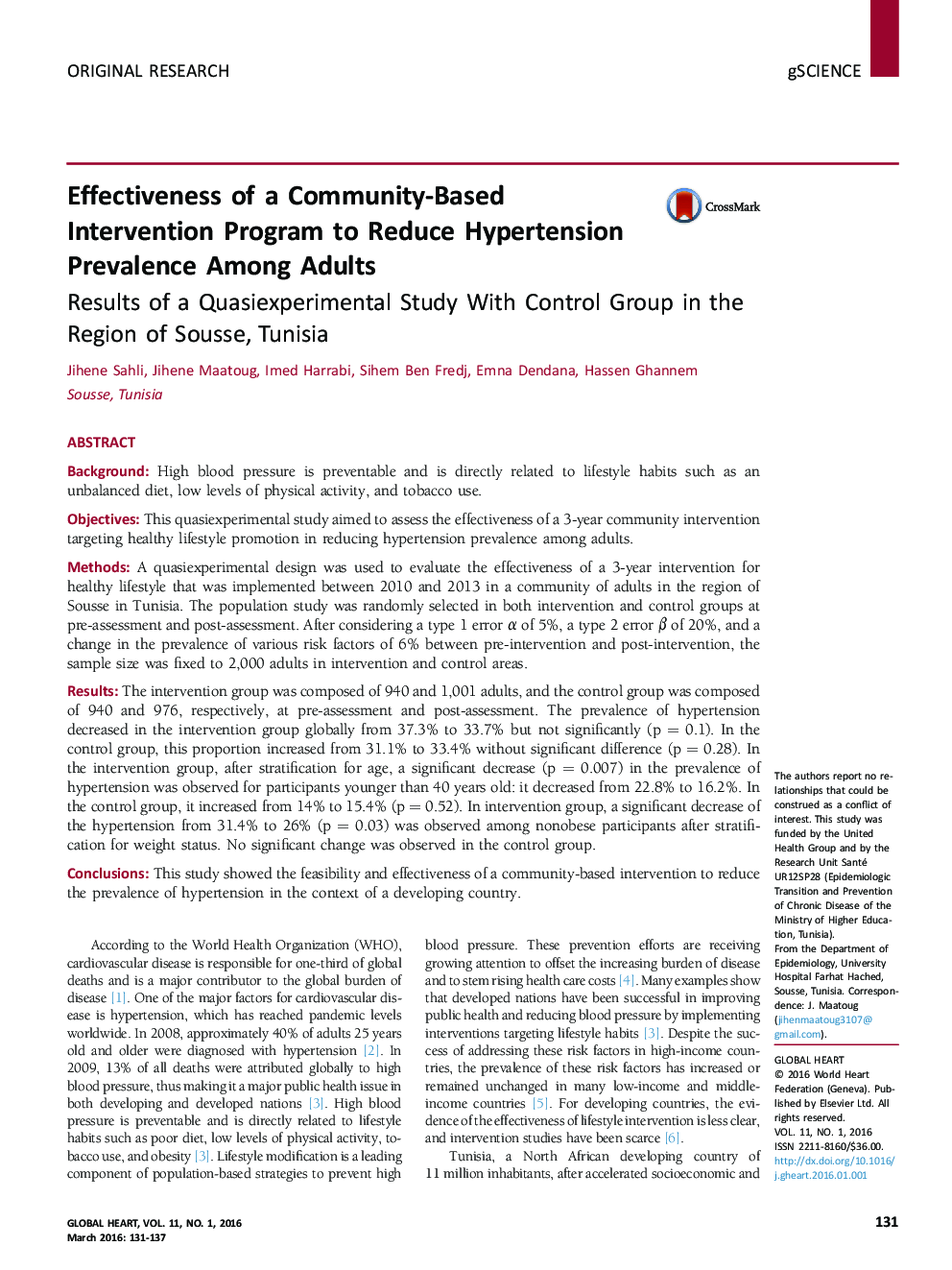| Article ID | Journal | Published Year | Pages | File Type |
|---|---|---|---|---|
| 5958668 | Global Heart | 2016 | 7 Pages |
â¢This article describes a quasiexperimental community-based intervention (2010 to 2013) in Tunisia.â¢The intervention took place in different settings: neighborhoods, workplace, schools, primary care, and mass media.â¢The intervention effect was negatively associated with hypertension.â¢The feasibility and effectiveness of a community-based intervention in a developing country were determined.
BackgroundHigh blood pressure is preventable and is directly related to lifestyle habits such as an unbalanced diet, low levels of physical activity, and tobacco use.ObjectivesThis quasiexperimental study aimed to assess the effectiveness of a 3-year community intervention targeting healthy lifestyle promotion in reducing hypertension prevalence among adults.MethodsA quasiexperimental design was used to evaluate the effectiveness of a 3-year intervention for healthy lifestyle that was implemented between 2010 and 2013 in a community of adults in the region of Sousse in Tunisia. The population study was randomly selected in both intervention and control groups at pre-assessment and post-assessment. After considering a type 1 error α of 5%, a type 2 error β of 20%, and a change in the prevalence of various risk factors of 6% between pre-intervention and post-intervention, the sample size was fixed to 2,000 adults in intervention and control areas.ResultsThe intervention group was composed of 940 and 1,001 adults, and the control group was composed of 940 and 976, respectively, at pre-assessment and post-assessment. The prevalence of hypertension decreased in the intervention group globally from 37.3% to 33.7% but not significantly (p = 0.1). In the control group, this proportion increased from 31.1% to 33.4% without significant difference (p = 0.28). In the intervention group, after stratification for age, a significant decrease (p = 0.007) in the prevalence of hypertension was observed for participants younger than 40 years old: it decreased from 22.8% to 16.2%. In the control group, it increased from 14% to 15.4% (p = 0.52). In intervention group, a significant decrease of the hypertension from 31.4% to 26% (p = 0.03) was observed among nonobese participants after stratification for weight status. No significant change was observed in the control group.ConclusionsThis study showed the feasibility and effectiveness of a community-based intervention to reduce the prevalence of hypertension in the context of a developing country.
